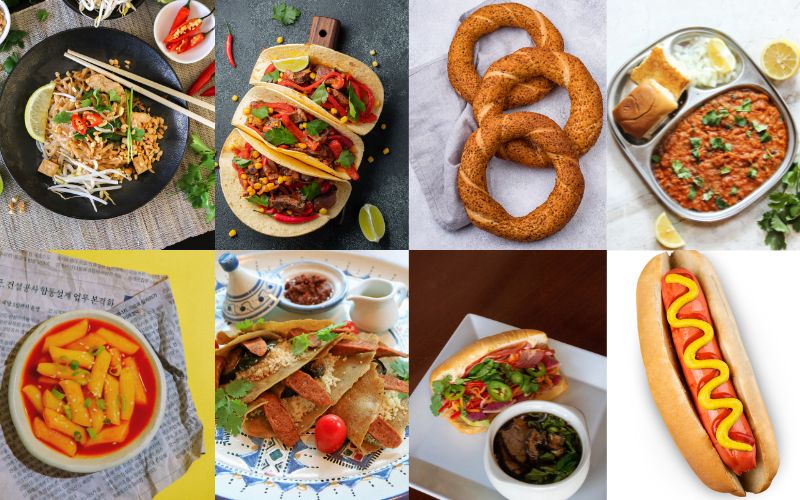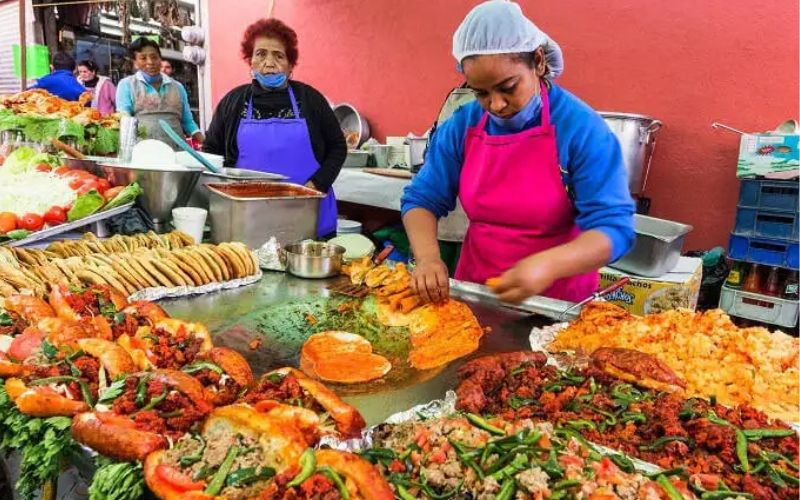Exploring the World’s Best Street Food
The world is a treasure trove of flavors, and some of the most tantalizing culinary experiences can be found not in high-end restaurants, but on the bustling streets of cities and towns around the globe. Street food is more than just a quick and convenient meal; it’s a window into the heart and soul of a culture. Join us on a gastronomic journey as we explore some of the world’s best street food.
I. Bangkok, Thailand – Pad Thai
Pad Thai is the quintessential Thai street food dish. A harmonious blend of sweet, sour, and savory flavors, it features stir-fried rice noodles with shrimp, tofu, or chicken, tossed in a sauce made from tamarind, fish sauce, and lime. The dish is often garnished with crushed peanuts and fresh cilantro. It’s a symphony of flavors that dance on your taste buds and a must-try when you visit the vibrant streets of Bangkok.
II. Mexico City, Mexico – Tacos al Pastor
Tacos are a beloved Mexican staple, and Tacos al Pastor is a testament to the country’s culinary mastery. These succulent tacos are made with thinly sliced marinated pork that’s been cooked on a vertical rotisserie. Served in soft corn tortillas and topped with pineapple, onion, and cilantro, these tacos are a burst of flavors that represent the heart and soul of Mexican street cuisine.
III. Istanbul, Turkey – Simit
As you stroll through the bustling streets of Istanbul, you can’t help but be drawn to the aroma of freshly baked bread. Simit, often referred to as Turkish bagels, are circular bread covered in sesame seeds, offering a delightful crunch with every bite. They are typically served with a side of tangy, thick yogurt and make for the perfect street snack while you explore the historic city.
IV. Mumbai, India – Pav Bhaji
Pav Bhaji is Mumbai’s answer to fast food, and it’s a dish that embodies the spirit of the city. A spicy and flavorful vegetable curry is served with soft, buttered rolls called pav. It’s a symphony of flavors and textures, often garnished with fresh coriander, chopped onions, and a squeeze of lime. A bite of this dish will transport you to the lively streets of Mumbai.

V. Seoul, South Korea – Tteokbokki
Tteokbokki is a popular Korean street food made from chewy rice cakes cooked in a spicy and slightly sweet red chili sauce. Often paired with fish cakes and boiled eggs, it’s a delightful mix of flavors and textures. It’s a dish that showcases the Korean penchant for bold and spicy tastes, and you can find it sizzling away on the streets of Seoul.
VI. Marrakech, Morocco – Moroccan Crepes (Msemen)
The bustling markets of Marrakech are a treasure trove of street food, and Moroccan crepes, known as Msemen, are a standout. These flaky, square-shaped pastries are cooked to perfection on griddles and are often stuffed with a savory filling like cheese, herbs, or ground meat. It’s a delightful blend of crispy and tender, and the flavors are a testament to the rich culinary heritage of Morocco.
VII. Ho Chi Minh City, Vietnam – Bánh Mì
Bánh Mì is the Vietnamese take on the humble sandwich, and it’s a culinary masterpiece. A French baguette is filled with a medley of ingredients such as grilled pork, cilantro, cucumber, pickled carrots, and daikon radish, and then drizzled with sauces like mayonnaise and chili. The result is a harmonious blend of flavors and textures that make this street food a must-try in Ho Chi Minh City.
VIII. New York City, USA – Hot Dogs
When it comes to iconic street food, you can’t overlook the quintessential New York City hot dog. These juicy sausages, nestled in soft buns, are often topped with a variety of condiments, from mustard and sauerkraut to onions and ketchup. Eating a hot dog on the streets of the Big Apple is not just a culinary experience; it’s a rite of passage.
Conclusion
Exploring the world’s best street food is not just about satisfying your taste buds; it’s about immersing yourself in the culture and traditions of a place. From the fiery spices of Bangkok to the savory delights of Istanbul and the bold flavors of Seoul, street food is a journey for the senses. So, the next time you travel, be sure to venture beyond the restaurant doors and savor the culinary treasures that the streets have to offer. You’ll discover that some of the most unforgettable meals are served on paper plates, under the open sky, in the heart of bustling cities around the world.






